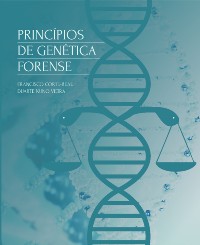Please use this identifier to cite or link to this item:
https://hdl.handle.net/10316.2/38504| DC Field | Value | Language |
|---|---|---|
| dc.contributor.author | Espinheira, Rosa Maria | |
| dc.date.accessioned | 2016-01-28T13:08:15Z | |
| dc.date.accessioned | 2020-09-09T02:45:06Z | - |
| dc.date.available | 2016-01-28T13:08:15Z | |
| dc.date.available | 2020-09-09T02:45:06Z | - |
| dc.date.issued | 2015 | - |
| dc.identifier.isbn | 978-989-26-0956-0 | |
| dc.identifier.isbn | 978-989-26-0957-7 (PDF) | |
| dc.identifier.uri | https://hdl.handle.net/10316.2/38504 | - |
| dc.description.abstract | Genetic identification of unknown missing persons is not on the top of exams performed by a forensic genetics service in Portugal. If on one hand the genetic identification of an unknown individual only takes place when no other scientific individual identification method allowed a positive identification, on the other hand, it only takes place on a large scale in case of mass disasters with considerable number of victims, which has no place in Portuguese contemporary history. Despite the small sample size of genetic identification cases of unknown persons in Portugal, we cannot fail to give prominence to the role, either in social or humanitarian terms, of this tool provided by forensic genetics. In this chapter we discuss the genetic identification of unknown persons making a historical retrospective of cases with special impact or interest, through aspects such as the scope of genetic identification, as well as more technical aspects such as the type of analyzed samples, the laboratory procedures and the main obstacles to the success of the genetic identification exams of unknown persons. The modest and unpretentious contribution we leave here is not presented as a technical or scientific reference on this matter, but as an useful and accessible understanding to the operators as diverse as lawyers and judges, doctors and other experts in medical and biomedical areas, as well as students and scholars of pre and post-graduate level of this area where all converge with the ultimate aim of, in the first instance, serve the justice, and ultimately, serve the good and the public cause. | eng |
| dc.description.abstract | A identificação genética de desconhecidos não figura, em termos quantitativos, no topo das perícias realizadas por um serviço de genética forense em Portugal. Se por um lado a identificação genética de um indivíduo desconhecido só tem lugar quando nenhum outro método científico de identificação individual permitiu uma identificação positiva, por outro lado, a mesma, em grande escala, só tem lugar nos casos de desastres de massa com consideráveis números de vítimas, os quais, não tem lugar com registo na história contemporânea de Portugal. Não obstante a reduzida casuística dos casos de identificação genética de desconhecidos em Portugal, não podemos deixar de atribuir realce ao importante papel, quer em termos sociais quer humanitários, desta ferramenta que a genética forense disponibiliza. Neste capítulo abordamos a identificação genética de desconhecidos fazendo uma retrospectiva histórica de casos com especial impacto ou interesse, passando por aspectos como o âmbito de aplicação da identificação genética, bem como por aspectos mais técnicos como o tipo de amostras estudadas, os procedimentos laboratoriais utilizados e os principais obstáculos ao sucesso da perícia de identificação genética de desconhecidos. O modesto e despretensioso contributo que aqui deixamos não se apresenta como um referencial técnico ou científico sobre esta matéria, mas sim como um documento simultaneamente útil e acessível ao entendimento de operadores tão diversos como juristas ou magistrados, médicos e demais especialistas das áreas médicas e biomédicas, bem como a estudantes e estudiosos de nível pré e pós-graduado desta área em que todos confluem com o objectivo último de, em primeira instância, servir a justiça e, em ultima instância, servir o bem e a causa pública. | por |
| dc.language.iso | por | - |
| dc.publisher | Imprensa da Universidade de Coimbra | por |
| dc.relation.ispartof | http://hdl.handle.net/10316.2/38492 | por |
| dc.rights | open access | - |
| dc.subject | Genetic identification | eng |
| dc.subject | unknown persons | eng |
| dc.subject | mass disaster | eng |
| dc.subject | Identificação genética | por |
| dc.subject | desconhecidos | por |
| dc.subject | Identidesastre de massa | por |
| dc.title | Identificação genética de desconhecidos | por |
| dc.type | bookPart | por |
| uc.publication.firstPage | 73 | - |
| uc.publication.lastPage | 92 | - |
| uc.publication.location | Coimbra | por |
| dc.identifier.doi | 10.14195/978-989-26-0957-7_3 | - |
| uc.publication.digCollection | PB | por |
| uc.publication.orderno | 3 | - |
| uc.publication.area | Ciências da Saúde | por |
| uc.publication.bookTitle | Princípios de Genética Forense | - |
| uc.publication.manifest | https://dl.uc.pt/json/iiif/10316.2/38504/207491/manifest?manifest=/json/iiif/10316.2/38504/207491/manifest | - |
| uc.publication.thumbnail | https://dl.uc.pt/retrieve/11118512 | - |
| uc.publication.parentItemId | 54573 | - |
| uc.itemId | 69514 | - |
| item.grantfulltext | open | - |
| item.fulltext | With Fulltext | - |
| Appears in Collections: | Princípios de Genética Forense | |
Files in This Item:
| File | Description | Size | Format | |
|---|---|---|---|---|
| identificacao_genetica.pdf | 2.5 MB | Adobe PDF |  |
Items in DSpace are protected by copyright, with all rights reserved, unless otherwise indicated.
